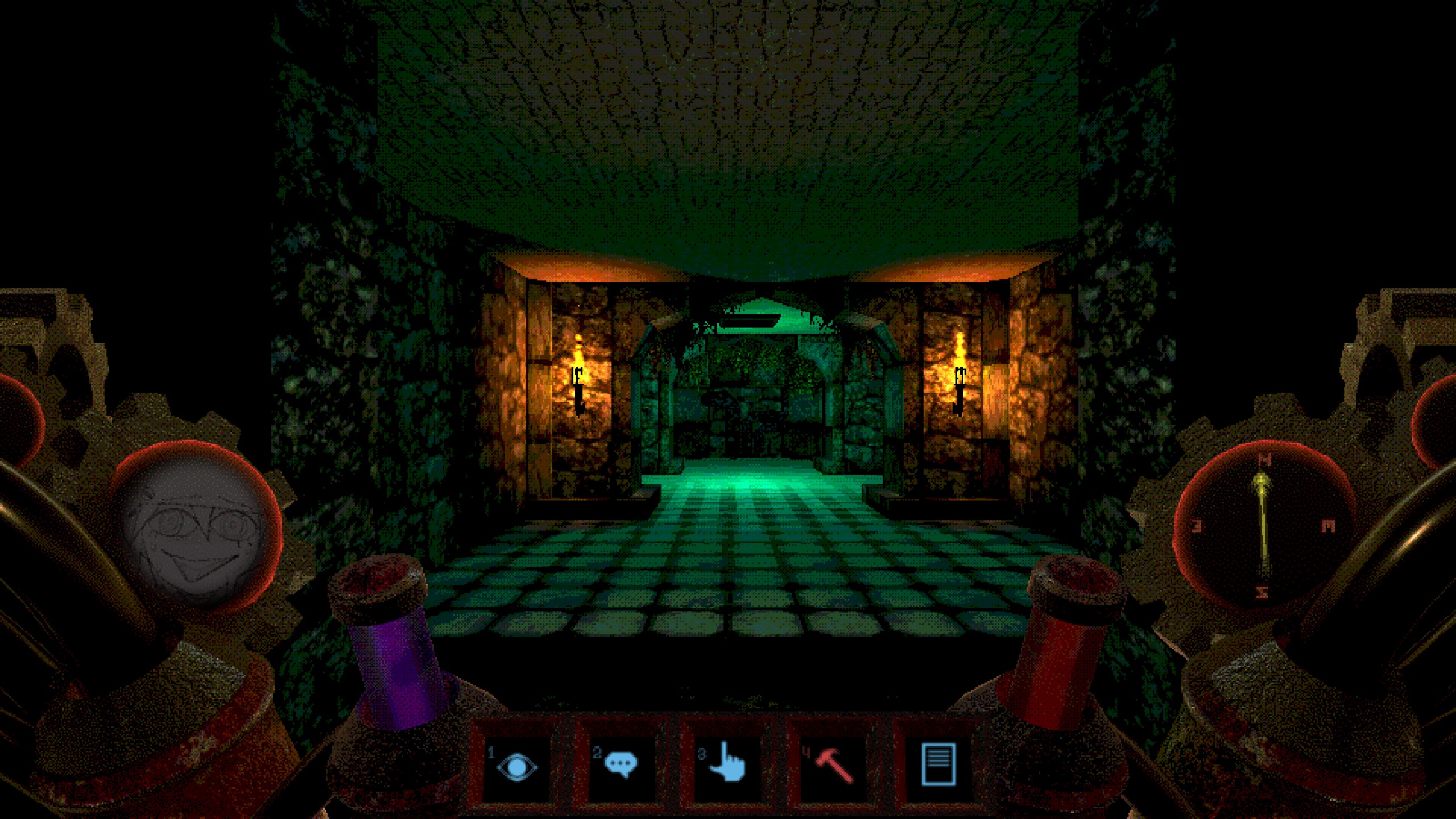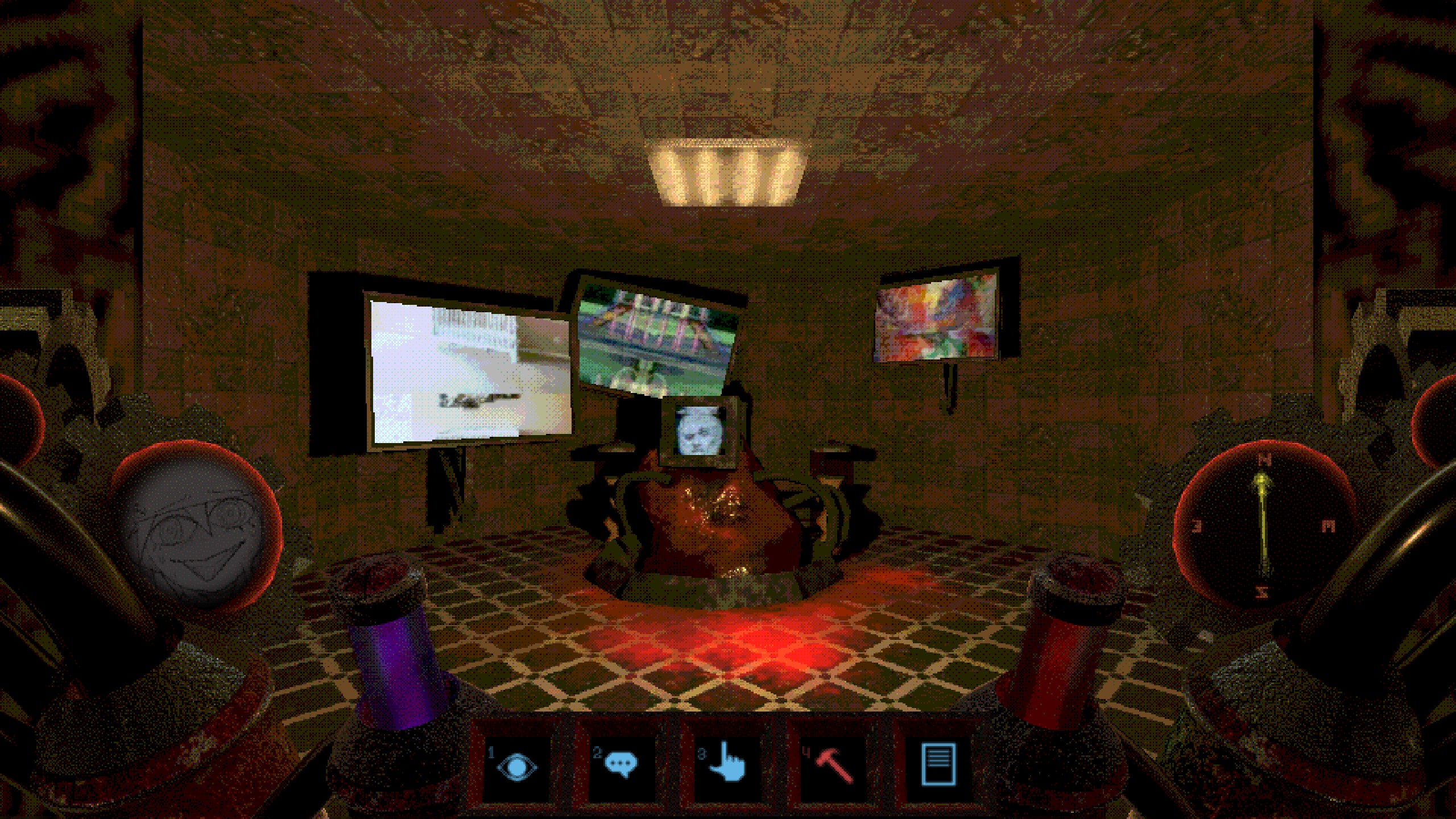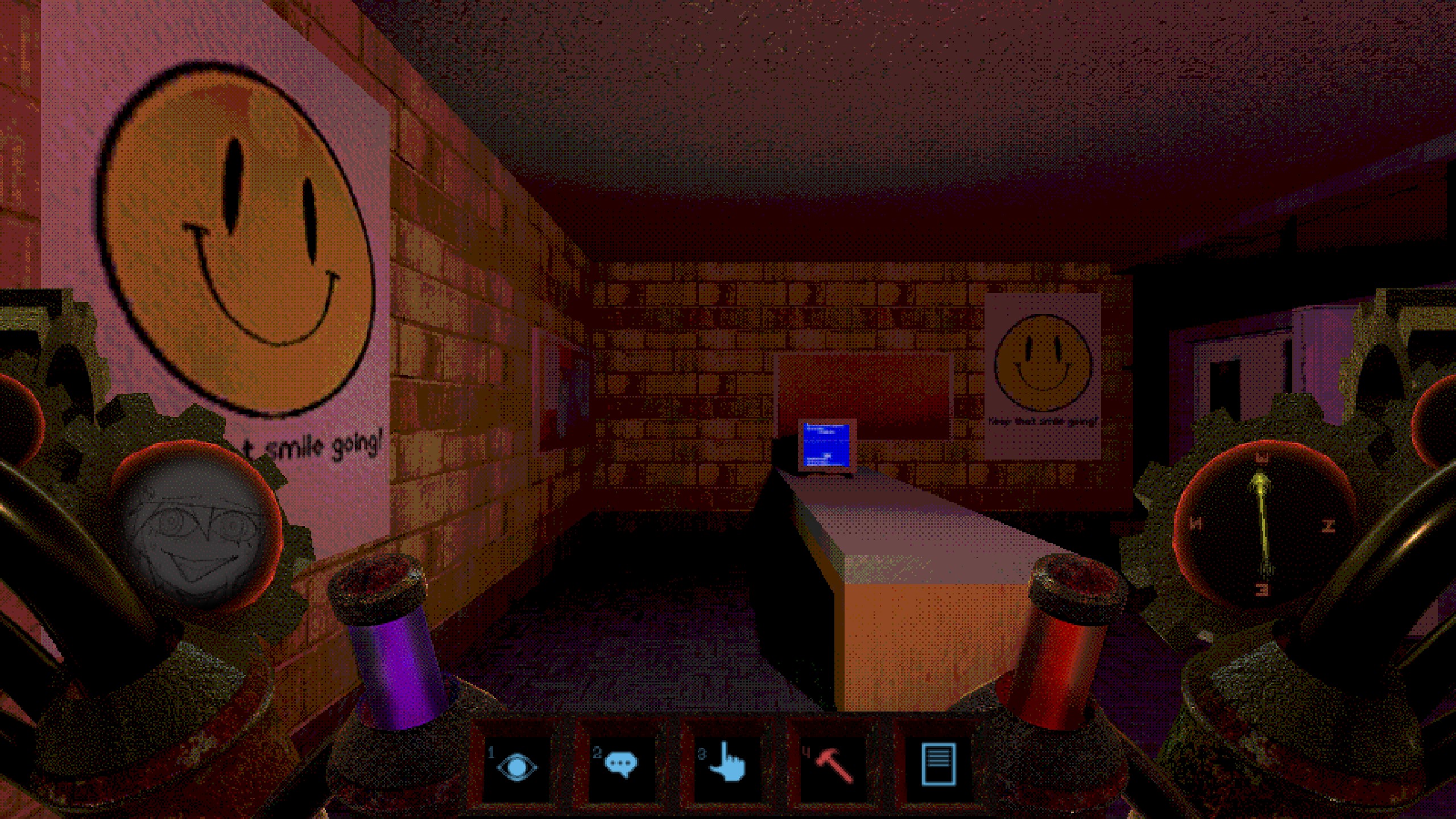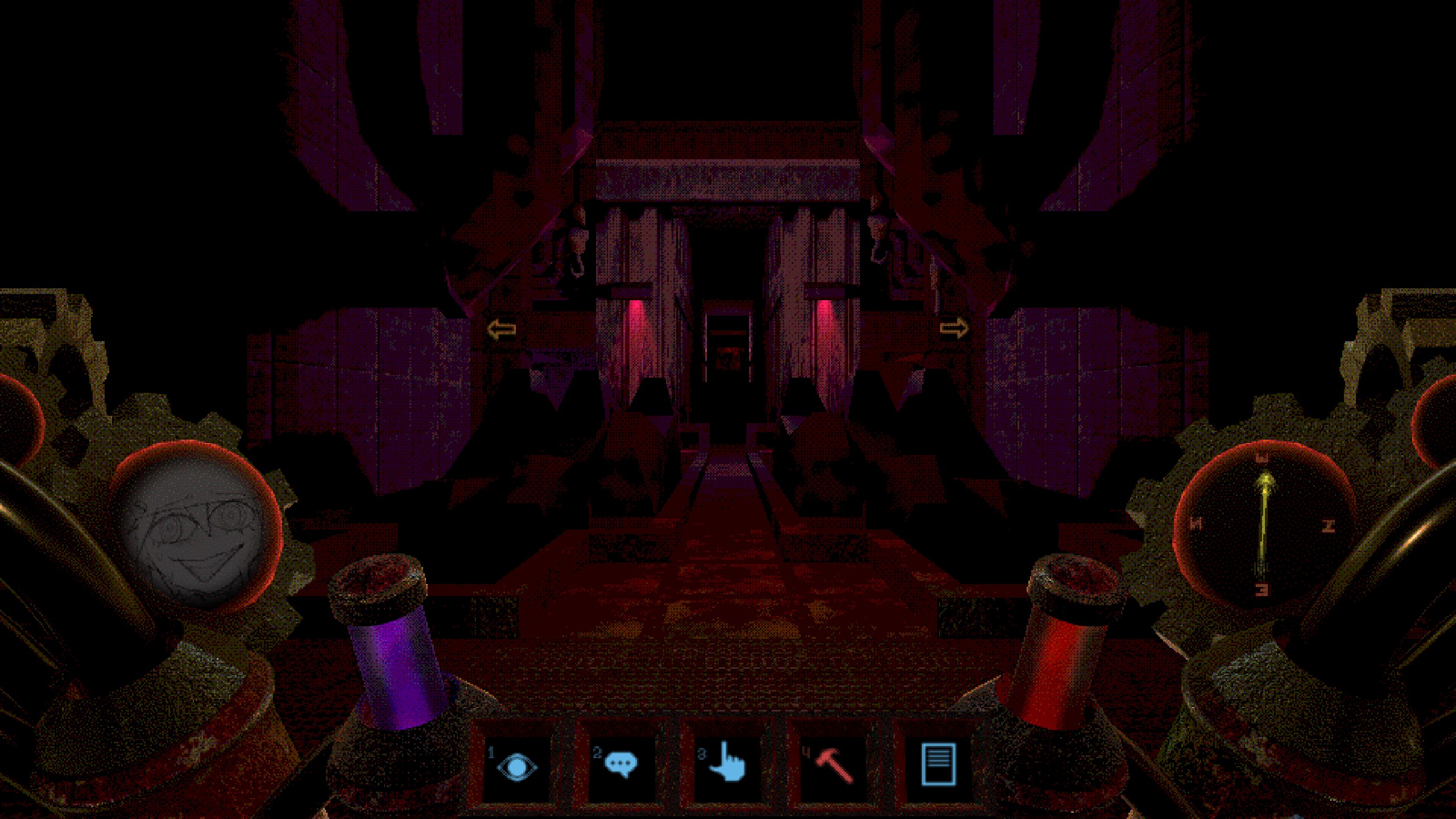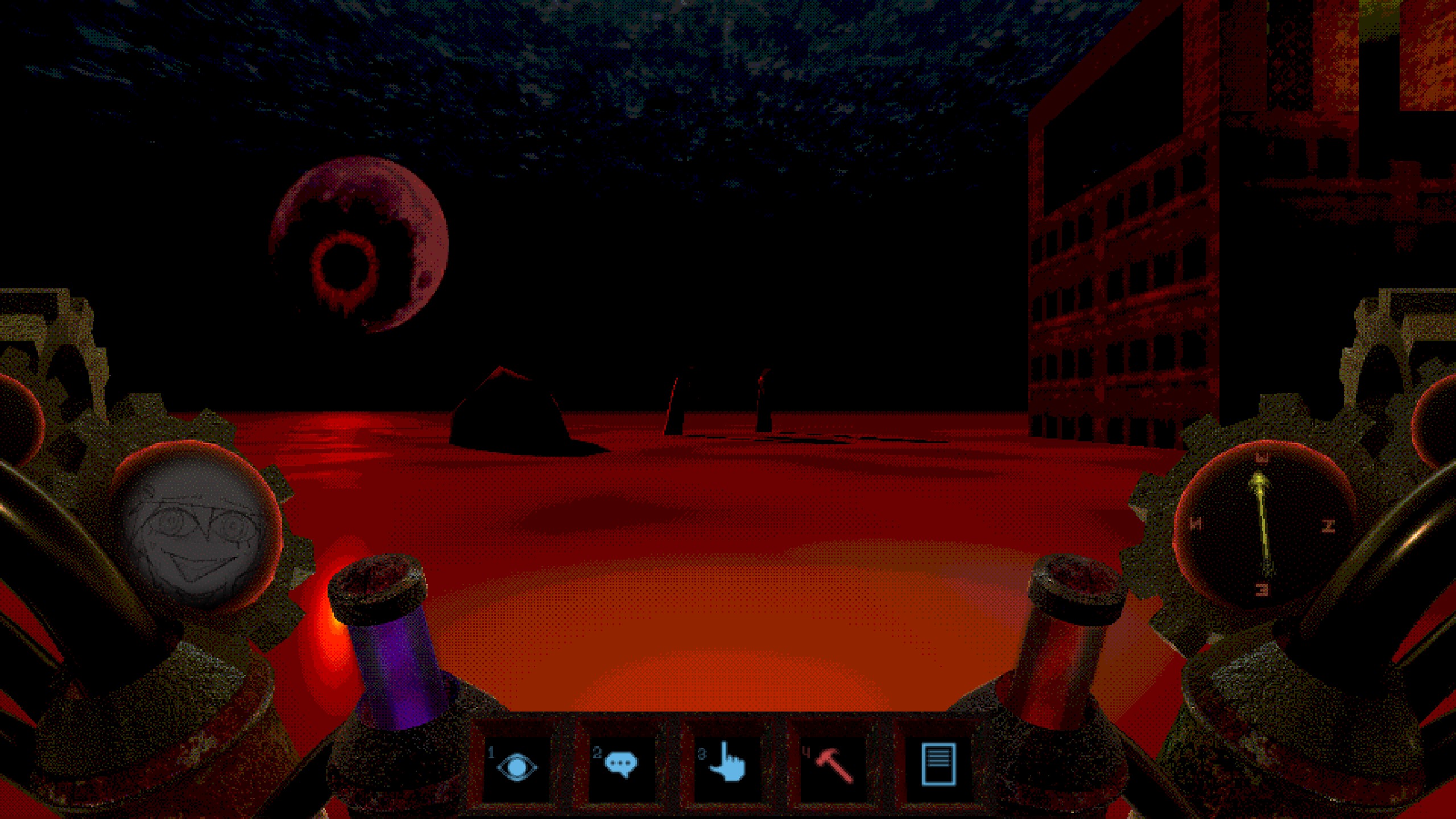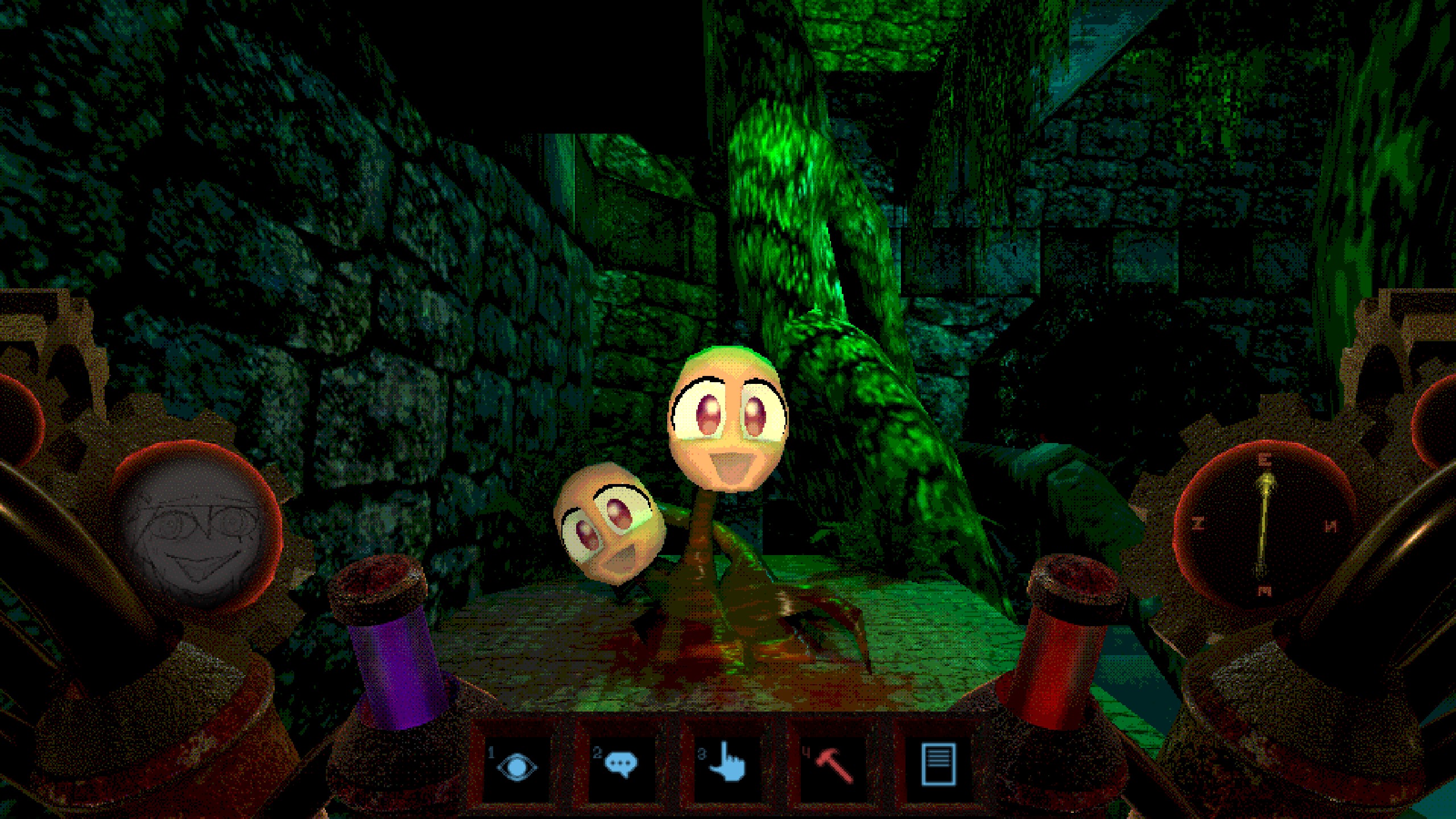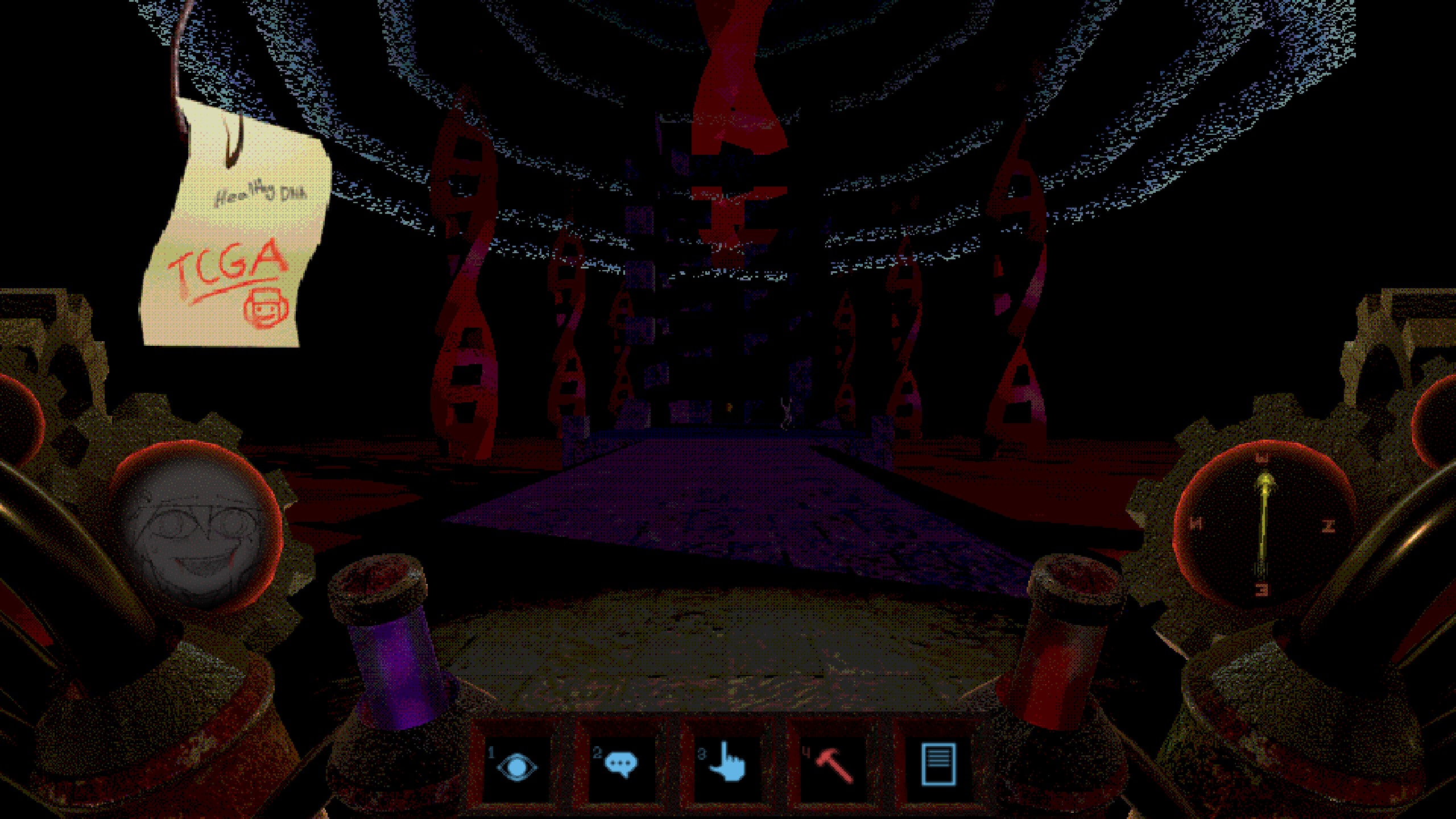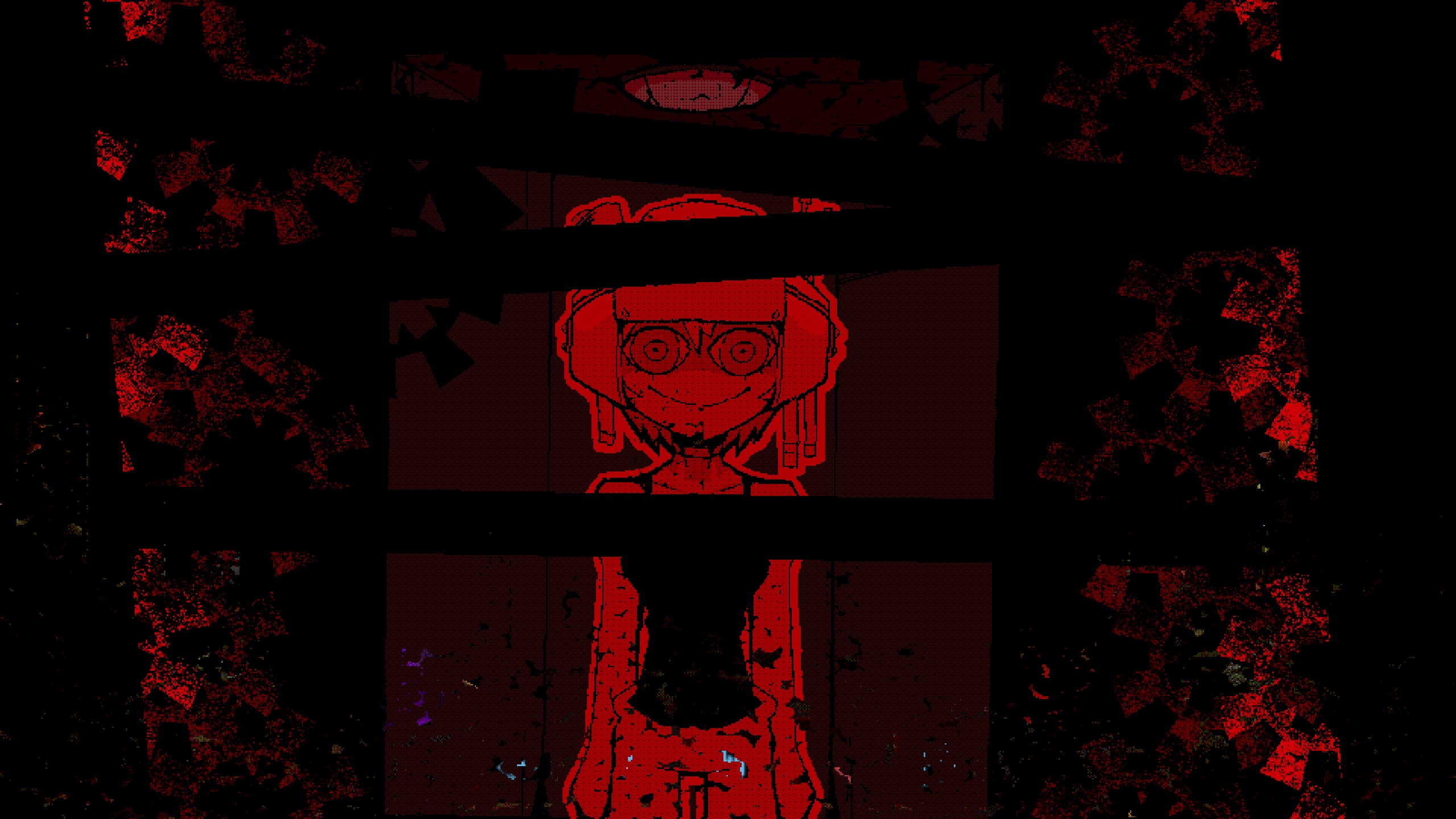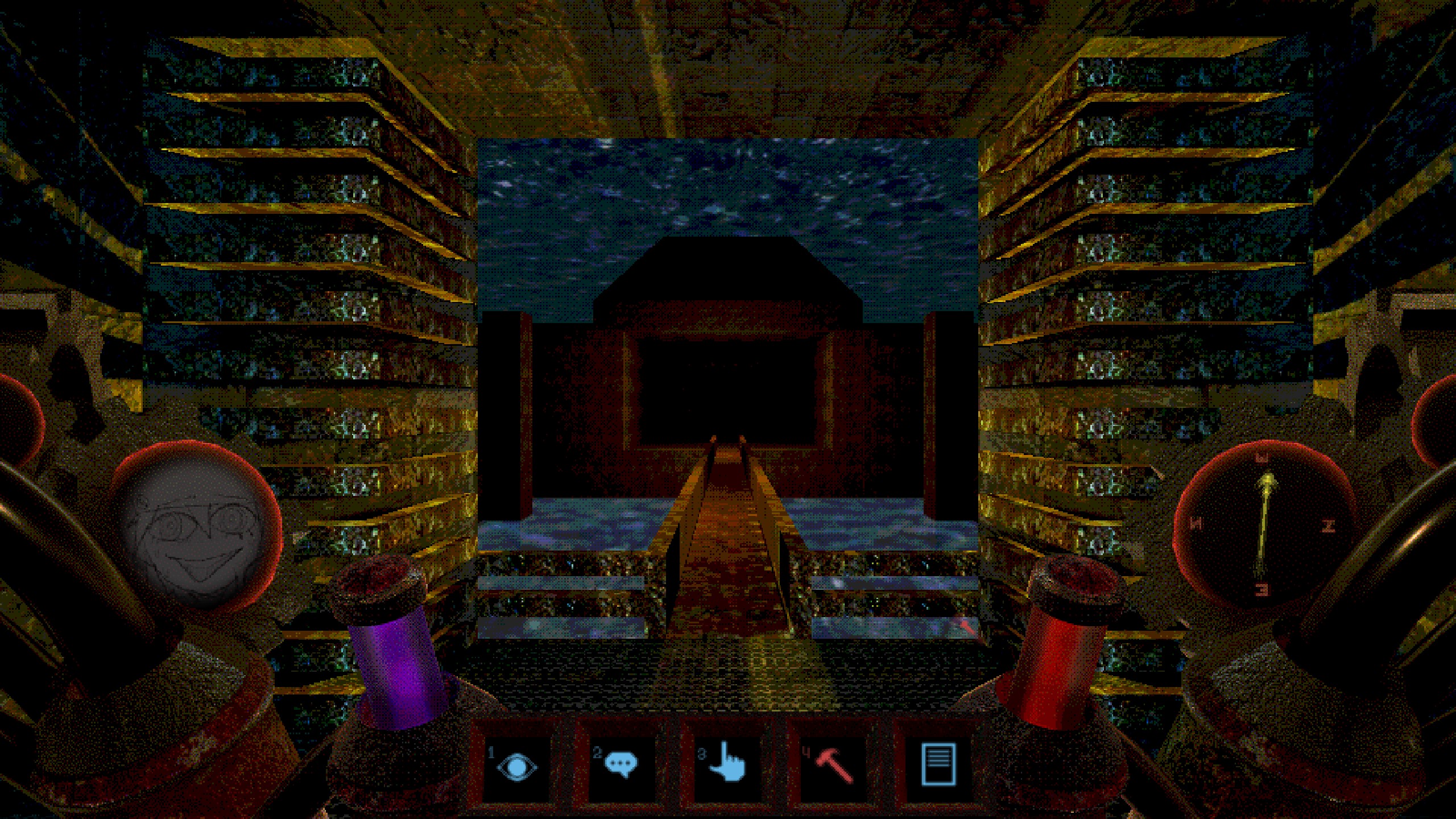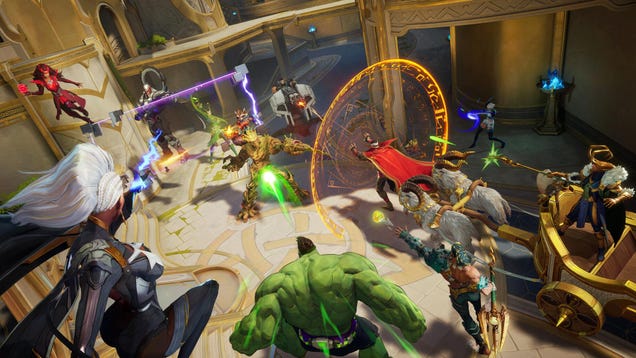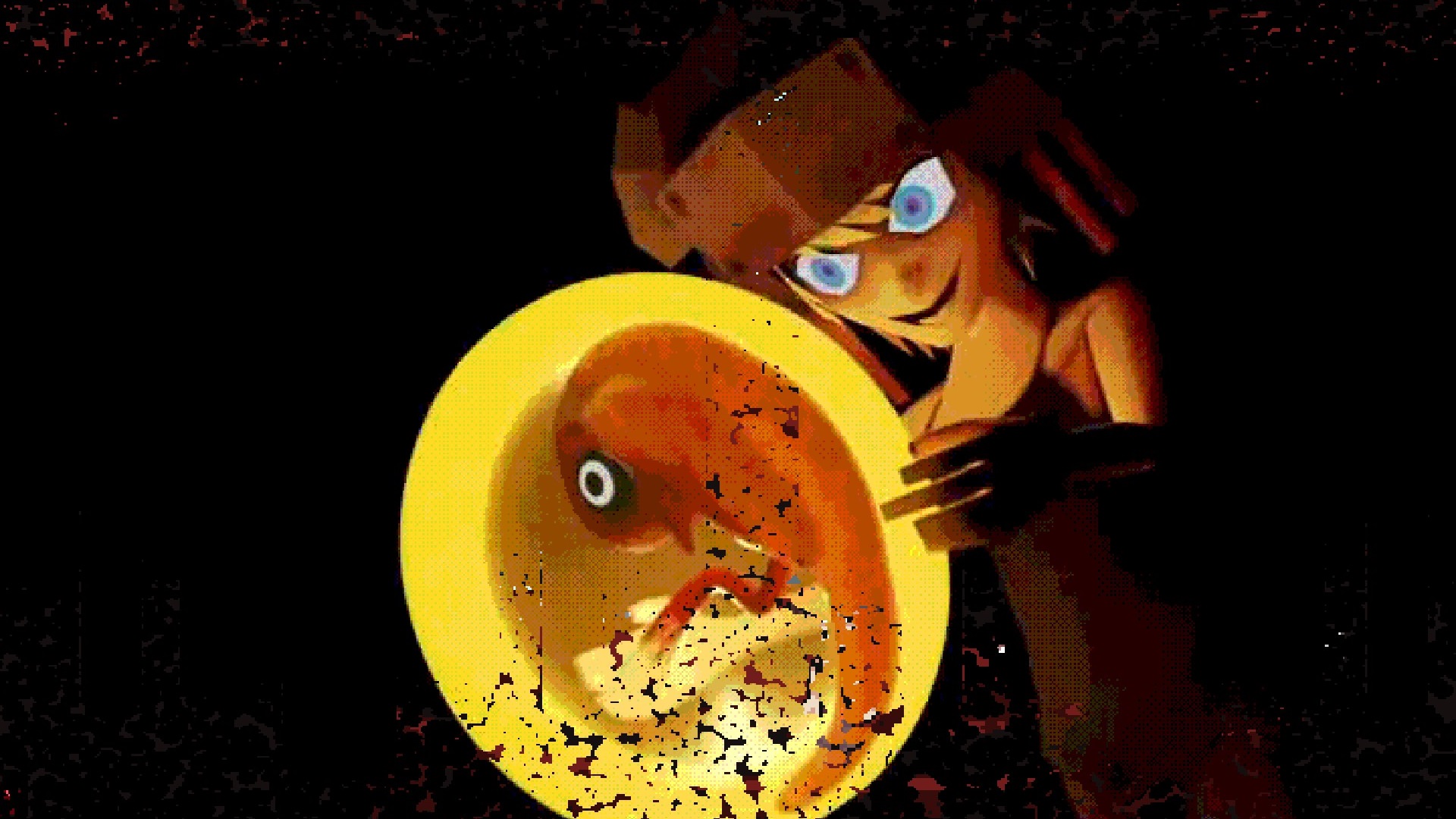
The sleeper hit just got a paid, expanded re-release after an initial free launch at the beginning of the year.
On one level, Psychopomp is a game about brutalizing impossible flesh monsters with a hammer from the Home Depot—”hammer” is one of your primary ways of interacting with this world, and it tends to be the one that Gets Things Done™. But I don’t think the violence is why the free dungeon crawler has racked up an “Overwhelmingly Positive” rating on Steam with 4,800 reviews at the time of writing. Psychopomp is a bracing nightmare, with dream logic, a surreal atmosphere, and breathtaking vistas that remind me of PS1 classic LSD: Dream Emulator, a creepypasta-core game from before there were creepypastas.
Before tackling an almost-inevitable (and heavily teased) sequel, developer Fading Club has returned with a definitive “Gold” version of Psychopomp, with a $9 price tag netting you a game that’s twice as long as the free version that released in January, with new and revamped levels, as well as a more developed plot.
Subterranean
Psychopomp has a premise that I initially found off-putting: The protagonist, a seemingly-disturbed woman, crafts a helmet that lets her see the hidden subterranean structures under government buildings—the first “layer” of Psychopomp Gold (which includes the only levels present in the initial, free release) consists of a public school, a children’s hospital, and a wastewater treatment facility.
My worry was that Psychopomp might pan out as a puerile exercise in lazy tropes about psychotic delusion, a game-length version of the self-conscious “schizo posting” many online characters adopt, pretending to be “crazy” and dangerous. I’m happy to say this isn’t the case: Psychopomp uses recognizable paranoid delusions as a jumping off point into surreal, apocalyptic urban fantasy. Shin Megami Tensei is a videogame comparison that comes to mind, a teenage/young adult protagonist finding themself trapped in a world like our own, but horribly wrong. Psychopomp’s setting is hollow and dead, with a mysterious doppelganger Earth replacing the moon, and our main character is out to get to the bottom of things.
Psychopomp takes a page from classic first person dungeon crawlers in its movement, but very little else. You have this grid-based, staccato gait and tank controls—WASD to move and turn, Q+E to strafe, with the mouse free floating around like a point-and-click adventure—but no RPG elements or party members to control. Down in the catacombs, you can look, touch, or talk to the various denizens, as well as whip out a trusty claw hammer, your sole means of defense in Psychopomp. The hammer turns friend and foe alike into a cloud of red mist, with a sickening crunch followed by a scream—equal parts satisfying and stomach churning.
Psychopomp has fantastic creature designs, with unique quivering, fleshy things emerging out of the darkness as you approach in each area. Most dungeon denizens are actually friendly, with cryptic dialogue that occasionally points to the objective of a delve. The children’s hospital, for instance, sports freaky nurses with gaping holes with their faces should be. When I first saw one emerge from the dark, you better believe it was hammer time, though it turns out these lovely ladies are actually the non-hostile NPCs of the zone.
For combat with rougher customers, Psychopomp has a simple, satisfying loop. With much of the levels shrouded in darkness, these horrible creatures will emerge when you least expect it, often in areas with traps or challenging terrain to navigate with Psychopomp’s tank controls. They’re jump-scare adjacent, but feel measured and well-implemented—the critters emit these low, constant grumbles that can help you echolocate them like a Thief guard, and when they took me completely by surprise, it felt like an earned fright as opposed to something like those Alan Wake 2 screamers lifted straight out of a trolling YouTube prank. When in a stand up fight, the deliberately sluggish movement called to mind the tension of classic PS1 survival horror, that frantic feeling of trying to get away or line up an attack when there’s this barrier between your intention and the character’s actions.
Dreamscapes
The fights and danger add a welcome edge to Psychopomp’s main appeal: Immersing yourself in its gruesomely wonderful other worlds. The sewage treatment plant from the first layer hides a mossy stonework grotto inhabited by flayed ghouls with chibi anime faces, like Ocarina of Time’s Forest Temple reinterpreted for a zoomer audience. The underbelly of the children’s hospital, meanwhile, is a Silent Hill industrial nightmare, with those void-faced nurses attending to transhuman flesh beasts claiming to be great men of history. Tucked away, though, you’ll find a beautiful starlit garden and a balcony overlooking a great void and another, different Messed Up Moon.
If the first layer consists of cramped tunnels with occasional glimpses at something vast and horrible, the second is like you punched through to a subterranean world: A modern-looking city infested with giant moths merges from an ocean of blood in one level, while another presents some kind of DNA factory with an entertainment district vibe.
Videogame worlds can be anything, so it’s so disappointing to see them so often present the same derivative settings: Fantasy landscapes, ’80s anime cyberpunk cities, caricatures of Middle Eastern countries that the US has invaded. I relish that Psychopomp took a stab at something new, weird, and impossible, then executed it so well with limited indie resources.
The immersion promised by that visual feast is solidified by some excellent sound design and a uniquely funky, synthy soundtrack that I’ve been listening to at work since finishing the game. Psychopomp’s dream simulation has a lot of what made me fall in love with Fading Club’s previous game, Dreamwild, which I still hold was the most underrated game of 2022. But I think Psychopomp’s more approachable, slow-paced gameplay—as opposed to the demanding boomer shooter movement and wave survival of Dreamwild—is a big part of why this game caught on so much better. The original release’s price tag of $0 certainly didn’t hurt either.
But Psychopomp Gold is definitely the way to go. The graphical improvements to the first layer alone are a welcome addition, while the new areas and level secrets make Gold more of a full-fledged game. It took me six hours to see the base and secret endings in Gold, vs a two-hour runtime for the original.
And now I’m eager to see Fading Club’s planned sequel. Part of me wishes the developer was similarly unfettered as when making the jump from Dreamwild to Psychopomp, to better create something completely new and surprising, but they seem to have a clear idea of where to go with a sequel, and have the added incentive to produce a direct follow-up to their most successful game to date.

